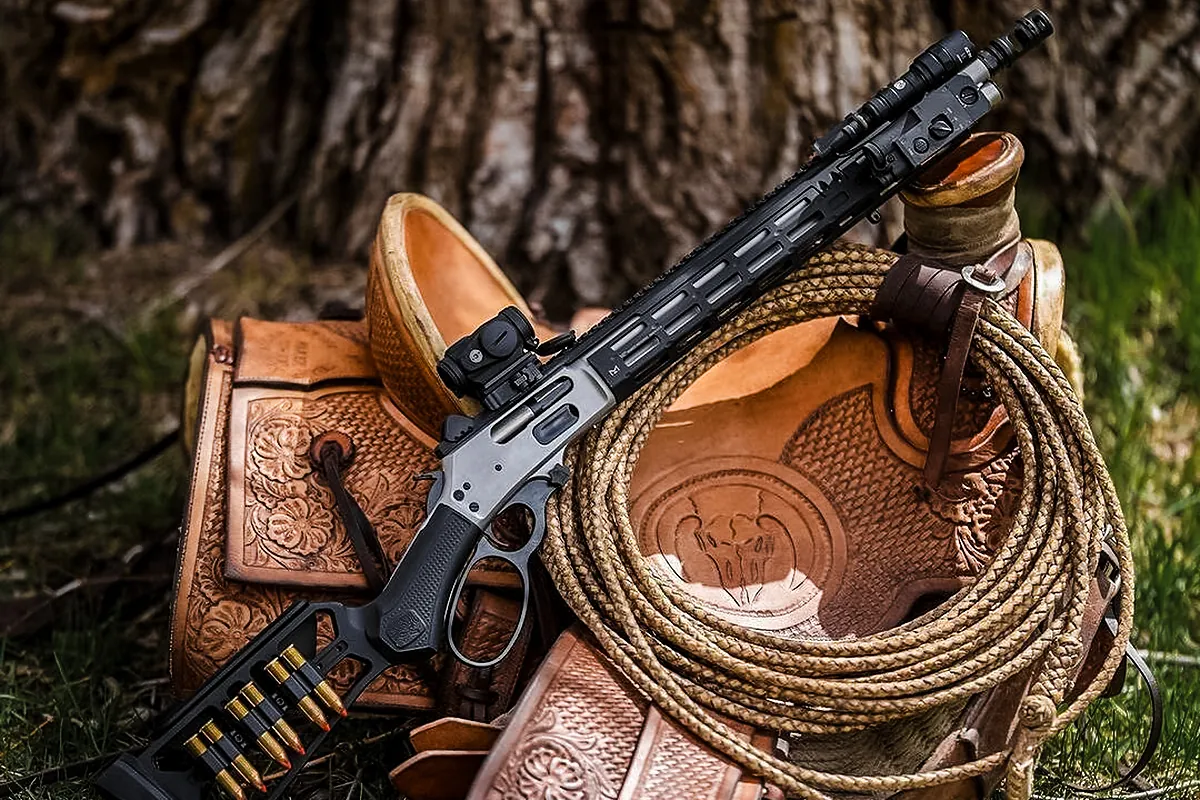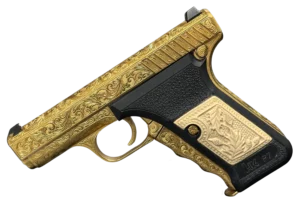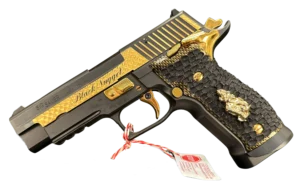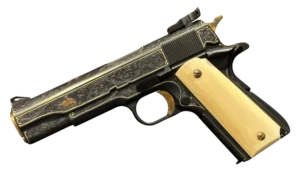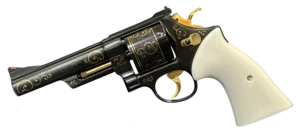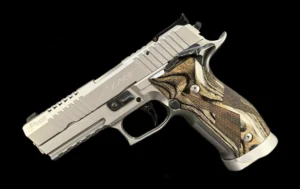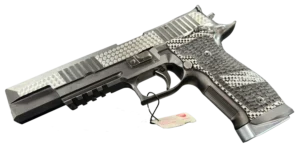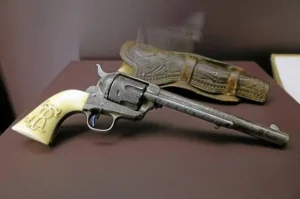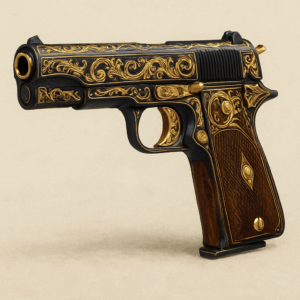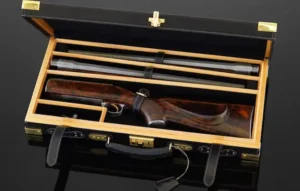Key Takeaways:
- Lever-action rifles are more than just mechanical marvels—they’re cultural icons: From the dusty trails of the Old West to the velvet-lined cases of collectors today, lever-action rifles tell stories that go far beyond function. They represent independence, innovation, and a distinctly American legacy that remains alive and thriving.
- The beauty of lever-actions lies in their balance of simplicity and impact: Whether it’s the intuitive mechanics, the timeless design, or their versatility in the field, these rifles continue to earn their keep. Models like the Winchester 1873 and Marlin 1895 aren’t just nostalgic—they’re practical, reliable, and built to last.
- Collecting lever-actions is as much about passion as it is about preservation: Each rifle carries a story—sometimes scrawled in provenance papers, other times etched in a well-worn stock. For collectors, it’s about finding the ones that speak to you, caring for them properly, and keeping those stories alive for future generations.
There’s something undeniably charming about a lever-action rifle. It’s not just the satisfying clack-clunk of the action or the gleam of walnut and blued steel—it’s the stories these rifles carry. They’ve been slung over the shoulders of frontiersmen, movie cowboys, and modern-day hunters alike. And for collectors? They’re pure gold.
Lever-action rifles don’t just shoot—they speak. They echo the grit and resilience of a different era. And whether you’re drawn in by their mechanical genius, their place in American folklore, or their sheer shootability, there’s no denying they’ve earned a place in the pantheon of iconic firearms.
More Than Just a Pretty Lever: What Makes Them Special?
Let’s be honest—lever actions have a kind of swagger. That swooping motion of the lever isn’t just functional, it’s cinematic. But beneath that style is substance: a clever, reliable mechanism that changed how rifles worked and how wars were fought—and won.
These rifles gained fame for one simple reason: they worked when you needed them most. Quick to fire, easy to operate, and built like tanks, they were the workhorses of the American West. But they’re not relics—they’re still in the field today, proving their worth with every shot.
A Quick Tip of the Hat to the Trailblazers
Before we geek out on individual models, it’s worth looking at how lever actions came to be. The story starts in the 1860s, right in the thick of industrial innovation. Picture this: most rifles at the time fired one shot, then needed to be painstakingly reloaded. Then came a fellow named Benjamin Tyler Henry who thought, “Surely, there’s a better way.”
Turns out, there was.
Henry’s 1860 rifle fired sixteen shots before needing a reload—unheard of at the time. That breakthrough kicked off a revolution in rifle design. It was fast, efficient, and reliable—and it laid the groundwork for a whole new generation of repeaters.
Why the Lever Action Stuck Around
So why didn’t the lever-action fade into history like some of its contemporaries? Because it did what it was supposed to do, over and over again.
Let’s break it down:
- High capacity: Unlike single-shot rifles, these could hold a handful—or more—rounds in their magazines.
- Rapid fire: That lever lets you chamber another round in a flash.
- Simplicity: Fewer moving parts means fewer things to break when you’re out in the field.
As the years rolled on, gunmakers like Winchester, Marlin, and Savage took the idea and ran with it. They polished, improved, and expanded the lever-action platform until it became what we know today—a reliable, versatile design that’s as at home in the woods as it is in a display case.
How They Work (Without Getting Too Nerdy)
Ever pulled a lever-action rifle’s handle and felt that mechanical glide? It’s like a dance—graceful, efficient, and kind of addictive.
Here’s a quick peek behind the curtain:
- You pull the lever down. This unlocks the bolt and starts the chain reaction.
- The bolt moves back, ejecting the spent cartridge.
- A new round is pushed from the magazine into place.
- You pull the lever back up, locking the new round into the chamber.
- You’re ready to shoot again.
Simple, right? That’s the genius. No electronics, no fragile parts—just good old-fashioned mechanical timing. That simplicity makes them easier to maintain and hard to beat in the field.
Winchester Model 1873: The One That Made History
Let’s talk legends. The Winchester Model 1873 isn’t just a rifle—it’s folklore in steel. You’ve probably heard it called “The Gun That Won the West,” and for good reason. It was the go-to tool for cowboys, settlers, and lawmen—and it earned that trust shot by shot.
Introduced in 1873, it quickly became the poster child for lever-actions. Why? A few reasons:
- Chambered in .44-40 and .38-40, which could be shared with revolvers—super convenient.
- Built tough, made to handle dust, dirt, and all manner of abuse.
- Smooth and balanced, which made it quick to aim and even quicker to shoot.
It wasn’t just popular—it was everywhere. And once Hollywood got its hands on it, the Winchester 1873 became more than a tool. It became a symbol of freedom, grit, and the American frontier.
Henry Original: Where It All Began
Before Winchester stole the spotlight, there was the Henry rifle. Designed by Benjamin Tyler Henry in 1860, this was the lever-action that started it all.
Crafted with a striking brass receiver and steel barrel, the Henry Original wasn’t just practical—it was beautiful. But what really set it apart was its magazine: a 15+1 round tubular design that let you fire off more shots than anything else at the time.
Civil War soldiers loved it. Confederate troops reportedly called it “that damn Yankee rifle you load on Sunday and shoot all week.” That’s not just praise—that’s legend status.
Today, an original Henry is a collector’s dream. And not just because it’s old, because it’s a piece of turning-point history.
Marlin 1895: Big Game, Big Performance
If you’re heading into bear country, you want a rifle that can drop a beast in one shot and give you a second one just as fast. Enter the Marlin 1895.
This isn’t a dainty collector’s piece—it’s a brawler. It was built to handle hard-hitting cartridges like .45-70 Government, and it does so with style.
Why it’s a favorite among modern hunters:
- Tough-as-nails construction—it’ll survive the kind of weather that ruins boots.
- Smooth action—fast cycling makes it a top pick for follow-up shots.
- Pinpoint accuracy, even with hefty rounds.
- Timeless looks, with a deep blued finish and classic walnut stock.
Sure, it may have roots in the 19th century, but the Marlin 1895 still holds its own against modern hunting rifles—and frankly, looks better doing it.
Savage Model 99: Breaking the Mold
Now here’s one that bucked the trend in all the right ways. The Savage Model 99 was a lever gun, but one with brains.
First off, it ditched the tubular magazine for a rotary one. Why’s that a big deal? Because now you could safely use Spitzer bullets (the pointy kind), which improved ballistic performance dramatically. That was a real innovation.
Savage didn’t stop there:
- Internal hammer: Sleek profile, no snags.
- Cocking indicator: A little window that tells you if the rifle’s ready to fire.
- Safety lever: Way ahead of its time in user-friendly safety.
The Model 99 quickly became a darling among deer hunters, and it stayed that way for decades. It’s an elegant mix of practicality and outside-the-box thinking, and that’s why collectors still chase it today.
More Than Machinery: Lever-Actions in American Culture
You can’t talk about lever-actions without talking about their mythos. These rifles aren’t just tools—they’re characters. They’ve galloped across Westerns, popped up in Civil War reenactments, and even found their way into country song lyrics.
They represent something deeply American: independence, self-reliance, and the rugged pursuit of opportunity. That’s why they’re so often handed down from father to son, and why they continue to show up in films, parades, and museum displays.
Even if you’ve never shot one, chances are you’ve felt their impact. They’re not just part of history—they’re part of our collective memory.
Thinking of Collecting? Here’s Where to Start
Collecting lever-actions can be wildly rewarding—but it’s not just about grabbing whatever old rifle shows up on GunBroker. It’s about finding pieces that tell stories and hold their value.
Here’s what you’ll want to keep in mind:
- Condition matters: Look for original finish, matching serial numbers, and minimal wear.
- Provenance adds value: If the rifle has a documented history, even better.
- Rarity counts: Limited runs or unusual calibers are collector gold.
- Functionality helps: A rifle that shoots as well as it looks? That’s a win-win.
Don’t be shy about joining forums or attending collector shows, either. The lever-action community is passionate and knowledgeable, and trading stories is half the fun.
Dress It Up: Accessories That Make a Difference
Sure, lever-actions are beautiful out of the box—but who doesn’t like a little personal flair? Whether you’re customizing for performance or just adding some vintage swagger, there’s plenty you can do.
Some of the most popular upgrades:
- Optics: Scopes or ghost rings help nail long-range shots.
- Slings: Practical and stylish—especially for field use.
- Upgraded sights: A simple peep sight can dramatically improve your aim.
- Custom stocks: Fit matters. And hey, if it looks good too? Bonus.
Just don’t go overboard and lose the classic character. The magic of a lever gun is in its roots, after all.
Picking the Right One for You
Let’s say you’re ready to pick up your first—or fifth—lever-action. What should you look for?
Start with the basics:
- Purpose: Hunting, target shooting, or collecting?
- Caliber: Choose one that fits your needs. No point lugging a .45-70 if you’re just plinking cans.
- Reputation: Stick with proven names—Winchester, Marlin, Henry, and Savage all have decades of street cred.
- Feel: Don’t underestimate how a rifle feels in your hands. Balance and weight matter more than you’d think.
Try a few out if you can. That “aha” moment when one just feels right? That’s your rifle.
Take Care of It, and It’ll Take Care of You
Lever-action rifles may be built to last, but they still need love. Regular maintenance goes a long way.
Some no-nonsense tips:
- Clean after every shoot, especially the action.
- Oil sparingly—don’t drown it, just coat the moving parts.
- Store smart—humidity is the enemy. Use a dry safe or a cabinet.
Every mark on the metal and every dent in the stock tells a story—but rust? That’s not a good one.
The Legacy Lives On
From saloon shootouts to tree stand hunts, lever-action rifles have seen it all. And they’re not going anywhere. Whether you’re in it for the nostalgia, the engineering, or the sheer joy of shooting, these rifles offer something few others can: connection. To the past, to tradition, and maybe even to family.
They’re not just firearms. They’re heirlooms, companions, and—if you’re lucky—a link to a story still being written.
Frequently Asked Questions
It’s all about the lever—literally. Located under the trigger guard, this lever cycles the action, ejects the spent casing, chambers a new round, and resets the firing mechanism. It’s a smooth, satisfying motion that’s both fast and intuitive once you get the hang of it. Unlike bolt-actions, there’s no need to take your hand off the grip between shots.
Surprisingly (or maybe not), they’re still very much in use. Hunters love models like the Marlin 1895 for their stopping power in bear country, and many shooters use them for sport or ranch work. While collectors cherish their history, these rifles aren’t just wall-hangers—they’re still getting dirty in the field.
Hard to pick just one, but the Winchester Model 1873 is in a league of its own. Nicknamed “The Gun That Won the West,” it’s arguably the most recognized and celebrated lever-action in history, thanks to both real-life frontier use and its immortalization in countless Western films.
In some cases, yes—but proceed with caution. Older rifles, especially those from the 19th century, weren’t made for today’s higher-pressure loads. If you’re lucky enough to own an original Henry or Winchester, it’s best to consult a gunsmith or stick with low-pressure “cowboy loads” designed for vintage firearms.
Totally. Many new shooters find the operation intuitive and the recoil manageable. The lack of a manual bolt or pump makes them ideal for quick follow-up shots, and the mechanics are straightforward enough that maintenance isn’t overwhelming. Just be prepared—they’re addictive.


